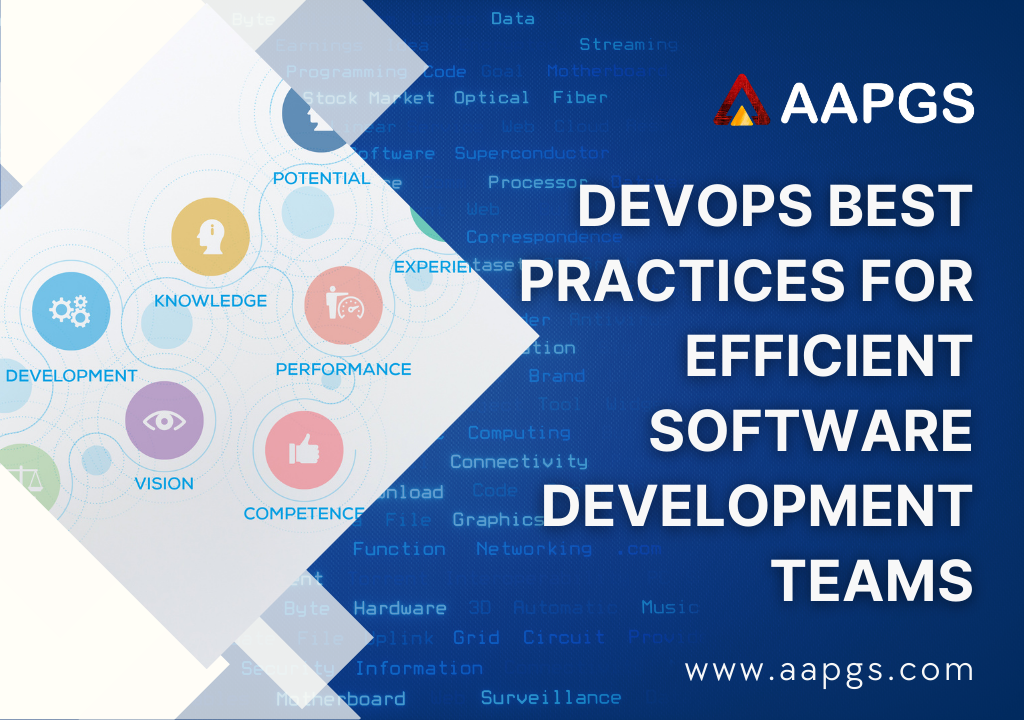The necessity to streamline workflows, minimize development time, and deliver products seamlessly has never been more important. This is where DevOps comes in. DevOps is a combination of development and operations practices designed to foster collaboration, automate processes, and accelerate product releases.
CI/CD Pipelines for Seamless Delivery
Continuous Integration (CI) and Continuous Deployment (CD) are key DevOps best practices. CI refers to automated testing and integrating code changes in a common repository, whereas CD implies that such changes are deployed to production automatically. Best Practices for CI/CD
- Automate testing: This eliminates human error and ensures that bugs are found early in the development cycle.
- Ensure a rapid and reliable build pipeline: An slow build pipeline can significantly cut efficiency. It's important to ensure that the build and deployment steps are as automated and dependable as possible.
- Use automated deployment: Automated deployments eliminate manual interventions and accelerate product releases.
- Track pipeline performance: Track pipeline performance to determine bottlenecks and resolve failures on the spot.
Infrastructure as Code (IaC) for Consistency
Infrastructure as Code is a DevOps game changer. It provides the ability for teams to deal with and provision infrastructure using code, maintaining consistency between environments be it development, testing, or production.
- Provision environment using automation: Automation guarantees development, testing, and production environments are always in a consistent configuration state, taking away time and making errors impossible.
- Test infrastructure configurations frequently: Testing the configuration frequently will make sure it fits your performance and security requirements.
- Follow security best practices: Have your infrastructure code adhere to current security standards in order to avoid vulnerabilities.
Using DevOps Automation Tools
Automation is the core of DevOps, and working with the proper automation tools can enhance team productivity significantly. Some of the most widely used DevOps automation tools are Jenkins for CI/CD, Docker for containerization, and Kubernetes for orchestration.
- Jenkins: Commonly utilized for continuous delivery and continuous integration. Jenkins is used to automate the build, testing, and deployment cycle, and therefore it plays an essential role in the DevOps pipeline.
- Docker: Excellent tool for packaging applications to make them run anywhere, any environment.
- Kubernetes: Container management tool that simplifies the deployment, scaling, and management of containerized workloads.
- Ansible: Applied for automating IT operations including configuration management, application deployment, and cloud provisioning.
Collaborative DevOps Strategies
One of the key DevOps principles is collaboration. Close collaboration among development, operations, and other business units is needed for successful implementation of DevOps.
- Collaborative DevOps Strategies:Cross-functional teams: Create teams consisting of members from development, operations, and quality assurance who collaborate on the same goals.
- Open communication: Encourage open lines of communication among teams to ensure everyone is in the know and informed.
- Regular feedback: Inculcate frequent feedback sessions between teams to evaluate performance and where they can improve.
DevOps Implementation Guide for Software Teams
Software teams planning to adopt DevOps must adopt a step-by-step process to achieve a seamless transition and effective adoption.
- Analyze existing processes: Review your team's existing software development lifecycle to determine where improvements can be made.
- Choose the appropriate tools: Pick the appropriate CI/CD tools, infrastructure automation software, and collaboration platforms to suit your requirements.
- Implement Infrastructure as Code: Begin coding your infrastructure to make environments standardized and consistency better.
- Foster collaboration: Promote a culture of collaboration between development and operations teams to maintain alignment on objectives.
- Monitor and optimize processes: Monitor your DevOps processes constantly and optimize them to make them more efficient and resolve upcoming issues.
DevOps Best Practices and AAPGS' Role in Your Digital Transformation
At AAPGS Pvt Ltd, we are experts at delivering customized solutions for companies interested in streamlining their digital operations using DevOps principles. From startups to long established enterprises, we provide consulting, training, and custom development services to guide you in the implementation and roll-out of DevOps across your teams.
Conclusion:
By embracing these DevOps best practices, your software development teams can maximize their efficiency, reduce errors, and enhance general collaboration. DevOps practices such as CI/CD pipelines, Infrastructure as Code, and automation tools will enable your teams to innovate quicker and deliver products with greater reliability.
FAQ
- What is DevOps principles and practices?
DevOps is a mindset, a cultural shift, where teams adopt new ways of working. A DevOps culture means developers get closer to the user by gaining a better understanding of user requirements and needs. - How many environments are there in DevOps?
Common environment names include Dev, Test, QA, Staging, and Production. - What are two practices at the core of the DevOps methodology?
continuous testing and continuous deployment. - What is the most important quality of DevOps?
The most important quality of DevOps is a culture of collaboration and open communication between development and operations teams. - What is the lifecycle of DevOps?
The DevOps lifecycle is a continuous process where development and operations teams collaborate to deliver software efficiently and reliably.
